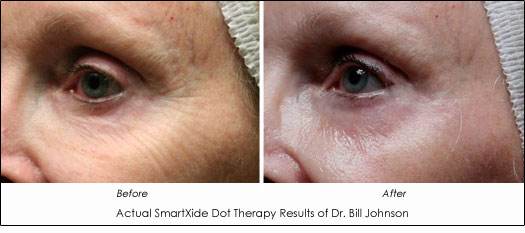Beauty Tech Review: Fractional Resurfacing Devices
Fractional resurfacing is a very popular procedure for evening skin tone and improving texture. There are many technologies available to perform this treatment and all of them use a different wavelength or method of delivery to treat patients. We spoke to physicians from all over the US to discuss the different fractional resurfacing devices available and specifically the device that they use. Dallas cosmetic surgeon Dr. Bill Johnson spoke to us about SmartXide DOT Therapy from Deka.
"I think the DOT has a couple of advantages, over some of the other devices. It is faster than most of them, which considering that I do all the CO2 resurfacing procedures that's a real advantage. The other thing is it's very versatile... how deep you go, how tight you put your dots, and how the shape of your pattern, and all those things add to a more versatile device," says Dr. Johnson. He is finding the DOT to be very useful on treating acne scars. "The classic use is for facial resurfacing in someone that has a lot of facial wrinkles, facial laxity, and facial creases. It certainly is quite good at that, I think one of the more exciting applications is in old acne scars, because, prior to having fractional CO2 therapy, full CO2 resurfacing was really the only thing available to those folks that made a difference, and it's such a dramatic long recovery time procedure that nobody would ever do it twice, and you really need to do several treatments on acne scars to make a real difference, so this has brought the capability to do several treatments with reasonable recovery times, and I think we're seeing some remarkable results."

Actual SmartXide DOT Therapy Results, After 1 Treatment, 6 months post procedure
Dr. Johnson does say that this treatment is not for those with very dark skin. Anybody ranking above a 4 on the Fitzpatrick Scale (a measurement of skin's ability to absorb light where a 1 is very pale and a 6 is very dark) is not a candidate for this procedure because of the risk for hyperpigmentation. Also he says that it is not recommended for rosacea patients as they don't receive much benefit. He has found it useful for areas all over the body. Dr. Johnson says, "We can pretty much do any area, you can actually do sensitive areas like under the arms or between the legs, with that you'd have to be a little more cautious in how you instruct the patients on recovery. When you get off the face, you have to turn down your settings, that's an important caveat, but other than that, it's easy to do the procedure off the face."

Actual SmartXide DOT Therapy Results, After 24 Days
SmartXide DOT can be used in conjunction with other treatments to provide the optimal results. "Obviously, Botox and fillers work well with it. We're a proponent of combining this with facial Thermage I think you get a lot of good tightening, and of course Thermage, while it is a very good tightening tool, does nothing for the surface texture or pigment where the DOT does a good job on both of those. The other procedure I really like, and we're starting to combine with it more and more is facial fat transfer I like to do it 2-3 weeks before or 6-8 weeks after we do the transfer, but I really like that combination, again, the facial fat transfer allows you to restore all of the volume... and the DOT allows you to address texture, superficial tightening, and pigment."
Dr. Johnson says that DOT Therapy costs about $2000 - $3000 for a face, and off face treatment price varies based on the surface area to be treated. Most patients only need a couple of treatments. "We typically talk about 1 or 2 [treatments] for the standard texture and tightening, we try to recommend to our patients 3 or 4 when we're doing acne scars and stretch marks.... Treatment takes about 25-30 minutes, plus, the patient has to wait about an hour for the topical lidocaine to work before the procedure."
Recovery is not difficult and goes relatively quickly. "Realistically, on face, they have about a week or so of social downtime, 2-3 days where they're swollen, and really shouldn't put on makeup, after day 3 they typically are just red and they cover it with makeup. So, a lot of our patients, even though we say it's a week, many if not most of our patients are actually able to return to work or social activities after day 3."
Dr. Bill Johnson
American Health and Beauty, in an effort to provide the most up-to-date information to our readers, presents the Beauty Tech Review. Our first installment in this ongoing series discusses Fractional Resurfacing technology. Join American Health and Beauty editor, Keith Veseleny, as he speaks with leading physicians who share their knowledge on each laser platform.
The Beauty Tech Review: Fractional Resurfacing - will include: Dr. Heidi Waldorf on {!Fraxel Re:store Dual | Fraxel} Dr. Etai Funk on Matrix IR Dr. Michael Kaminer on ProFractional Dr. Janee Steinberg on Sandstone Matrix, Dr. Lori Brightman on eMatrix Dr. Deborah Sarnoff on SmartSkin Dr. Christopher Zachary on {!Fraxel Re:pair | Fraxel} and Dr. Bill Johnson on SmartXide Dot Therapy